-
Posts
12431 -
Joined
-
Last visited
-
Days Won
554
Content Type
Profiles
Forums
Events
Everything posted by Fiery
-
You have to enter a filename in the first edit field Example: C:\MYLOG.HTM
-

Where is CPU temperature? (Dell Dimension 2400)
Fiery replied to mojave's topic in Hardware monitoring
Thank you, but it looks like you've submitted the ISA Sensor Dump twice, and so no SMBus dump was submitted -
In that scenario the best would be to enable the Logging function in AIDA64 / main menu / File / Preferences / Hardware Monitoring / Logging. It will create 2 log files, one for all readings, and another one for statistics (minimum / maximum / average values). Regards, Fiery
-
Thank you for the feedback
-

Asus Sabertooth 990FX temperature monitoring
Fiery replied to KockBurn's topic in Hardware monitoring
Thanks for the feedback -
Thank you, we've fixed it up. Please upgrade to the latest beta version of AIDA64 Extreme Edition available at: http://www.aida64.com/downloads/aida64extremebuild1957z0xbm6hgklzip After upgrading to this new version, make sure to restart Windows to finalize the upgrade. Let me know how it works ;)
-

Asus Sabertooth 990FX temperature monitoring
Fiery replied to KockBurn's topic in Hardware monitoring
We've improved the Thermal Radar logic initialization in AIDA64. Please upgrade to the latest beta version of AIDA64 Extreme Edition available at: http://www.aida64.com/downloads/aida64extremebuild1957z0xbm6hgklzip After upgrading to this new version, make sure to restart Windows to finalize the upgrade. Let me know how it works -
Thanks. We've improved the tree updating in the latest beta version of AIDA64 Extreme Edition available at: http://www.aida64.com/downloads/aida64extremebuild1957z0xbm6hgklzip After upgrading to this new version, make sure to restart Windows to finalize the upgrade. Let me know how it works.
-

Where is CPU temperature? (Dell Dimension 2400)
Fiery replied to mojave's topic in Hardware monitoring
That system may not have a sensor chip logic at all. We can check that though, if you could submit 2 dumps: 1) Right-click on the bottom status bar of AIDA64 main window --> Sensor Debug --> ISA Sensor Dump. Copy-paste the full results into this topic. 2) Then right-click on the bottom status bar of AIDA64 main window --> Sensor Debug --> SMBus Dump (Full). Copy-paste the full results into this topic. Thanks, Fiery -

Where is CPU temperature? (Dell Dimension 2400)
Fiery replied to mojave's topic in Hardware monitoring
CPU temperature should be there as well. If it's not there, then your system may not support measuring CPU temperature, but only core diode temperatures. If you want to verify that, then please let us know more about your system (e.g. motherboard model, CPU type), and we'll check it. Regards, Fiery -

Asus Sabertooth 990FX temperature monitoring
Fiery replied to KockBurn's topic in Hardware monitoring
We'll do some more tests with reboots, and also check if there are any remaining services after AI Suite II uninstall. Please note that PSU power off is only required if you want to reset the Thermal Radar hardware to factory defaults. In normal use it wouldn't matter what state it's in, since now AIDA64 is supposed to handle it well in both states (state #1 is AI Suite II not installed; state #2 is AI Suite II installed). BTW, do you use the latest Sabertooth 990FX BIOS? -

Asus Sabertooth 990FX temperature monitoring
Fiery replied to KockBurn's topic in Hardware monitoring
We've completely uninstalled AI Suite II, restarted Windows, then powered off the computer before doing that test. -
Thank you We'll soon add more gauge icons, for e.g. network traffic items.
-

Asus Sabertooth 990FX temperature monitoring
Fiery replied to KockBurn's topic in Hardware monitoring
We've tested that, but on our Sabertooth 990FX test system all Thermal Radar-related temperatures change, following system load. I'm not sure what could get the temperatures stuck, but if you can find out, please let us know in this topic. -

Asus Sabertooth 990FX temperature monitoring
Fiery replied to KockBurn's topic in Hardware monitoring
Thank you for the feedback Temperature #1 is what Thermal Radar calls "VCORE-1" temperature, whereas Temperature #2 is what Thermal Radar calls "VCORE-2" temperature. As for the EC warning in the Event Log, it's just Windows ACPIEC driver that sometimes catches AIDA64 EC register readout. It's nothing serious, just a warning -
At language change it's the treeview control that has to be cleared and built up again, from scratch. So it's actually Windows that resets it to its default unfolded state. I know it may be a bit inconvenient, but most of us don't change language more than one time a year perhaps Or if you do change the language frequently, then please let me know why, because I'm rather curious about that Regards, Fiery
-

I found something weird in L2 Cache Benchmark
Fiery replied to Garfunkel's topic in Benchmarking, system performance
So far we've been able ot narrow it down to the memory allocation Windows API call. Other software are also affected by this anomaly. We'll wait for the Win8 Release Preview before drawing any further conclusion. We're also waiting for AMD's and Intel's investigation to finish. -
Upgrading to a new beta release usually works like this: 1) Download the ZIP package 2) Close AIDA64 if it is running 3 Extract the ZIP package into the existing installation folder of AIDA64. Let it overwrite any existing files. Your settings in the AIDA64.INI file and your entered license key will be retained. 4) Restart Windows to finalize the upgrade In case with the new beta it still doesn't work right, then please right-click on the bottom status bar of AIDA64 main window --> Sensor Debug --> ISA Sensor Dump. Copy-paste the full results into this topic.
-

Asus Sabertooth 990FX temperature monitoring
Fiery replied to KockBurn's topic in Hardware monitoring
Please note that you need to completely power off your system (it's best to switch off the PSU for 2 minutes after shutting down the computer) to get the Thermal Radar hardware back to factory defaults. -
We've contacted Corsair to ask them to help us about this issue. I'll let you know in this topic once we have an update on this matter.
-
I'm sorry, I forgot to ask you to enable the options "RAID member enumeration" and "RAID SMART support" in the Preferences So that's how it's supposed to provide the best results on your configuration.
-
Here's the new AIDA64 beta update with the RSTe-related fix implemented:: http://www.aida64.com/downloads/aida64extremebuild1954ghbsmz4c8kzip After upgrading to this new version, make sure to restart Windows to finalize the upgrade.

